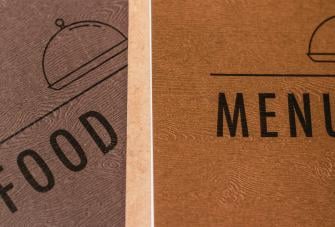How to Get a Restaurant Loan
Opening a restaurant is a dream for many people. Whether you want to be your own boss or simply enjoy sharing delicious food with others, restaurant ownership is one of the best ways to achieve these goals.
But opening a restaurant is no easy task. Aside from obtaining the right licenses, this venture can come at a steep cost. For this reason, many entrepreneurs need to obtain loans to start their restaurants.
Keep reading to see how to get a restaurant loan so you can get your new business up and running.
What can loans be used for?
Depending on your business location and government regulations, you can expect the following expenses when opening a restaurant. Some are one-time fees while others are recurring costs that you must factor into your financial projections.
- Rent and utilities: It is best to keep your rent costs under 20% of your total monthly revenue.
- Government licenses: You will need to obtain certificates and licenses before you can serve food and alcoholic beverages.
- Labor costs: How much do you plan to pay your employees? Who will receive tips, and what will their wage be if so?
- Improvements: Most business owners invest some initial capital into paint, flooring, decor, and other renovations.
- Equipment: From freezers to fryers, you will need commercial equipment to prepare food. You can minimize cost by purchasing used restaurant equipment.
- Point of sale system: You will need a restaurant POS system to track inventory, process transactions, and carry out other business tasks.
- Supplies: Your restaurant will need to purchase silverware and flatware, furniture, storage containers, and other essential items.
- Food inventory: Think about how much food you will need to keep on hand and how often you will need to reorder stock.
- Cash reserves: Since you will not likely be profitable for some time, it is advised to have enough capital in reserve to cover one year of expenses.
- Advertising: Will you pass out flyers, use digital marketing, or use any other marketing methods?
- Insurance: Most restaurants will need general liability insurance, liquor liability insurance, and commercial property insurance.
Types of restaurant loans
In most cases, the average restaurant owner will finance their business with the following loans:
- CSBFP loans: The Canada Small Business Financing Program helps finance businesses that meet the qualification requirements.
- Bank and credit union loans: Banks can offer private loans to cover general business expenses.
- Business line of credit: More like a private credit card than a loan, this options gives you access to capital that is often used to help maintain cash flow.
On top of these options, many entrepreneurs rely on these non-loan financing methods:
- Credit cards: Using a business credit card can help with startup expenses as long as you have an affordable interest rate.
- Friends and family: If you can’t qualify for a loan, perhaps your social circle can help get your restaurant up and running.
- Private investors: Partnering with private investors can give you fast access to cash without stringent qualification requirements.
How much can you borrow?
Loan amounts vary depending on the loan type, your needs, and your creditworthiness. For any bank-issued loan, the lender will only loan you the amount they believe you need and are able to repay.
For example, the maximum you can borrow through a CSBFP loan is $1 million. Likewise, the Business Development Bank of Canada lists its maximum small business loan at $100,000 [1]. However, the bank does offer other loan products that provide much more money than that.
Instead of looking at the maximum you can obtain, let’s see the average amount businesses borrow using data from OnDeck [2].
- Bank Term Loan: $500,000
- Long-Term Online Loans: $5,000 to $500,000
- Short-Term Online Loans: $5,000 to $250,000
How to get a CSBFP restaurant loan
Most restaurant owners will want to apply for an CSBFP loan. Compared to conventional bank loans, SBA loans have less stringent qualification standards. They are ideal for people with no or bad credit that would otherwise be denied a conventional loan.
Steps to obtain a small business loan:
- Gather the following documents (such as business licenses, tax returns, and your business plan)
- Find a participating lender [3]
- Complete the lender’s loan application
- Wait for one to two months until a decision is made
Choose the right POS for your restaurant
After qualifying for your restaurant loan, you will need to buy all the supplies need to get off the ground. When it comes to equipment, few things are more important than your POS system. Choosing an outdated or ill-suited device can slow down service, complicate inventory management, and jeopardize your business altogether.
Epos Now offers a range of POS solutions for business across the world. With our restaurant hardware and software, you can speed up operations and improve overall efficiency.
With Epos Now, you can get the following benefits:
- Real-time stock control
- Employee management tools
- Detail reporting features
- Flexible payment processing
- Kitchen display screen/order receipt printer
Contact us today to see a demo of the Epos Now POS system.




